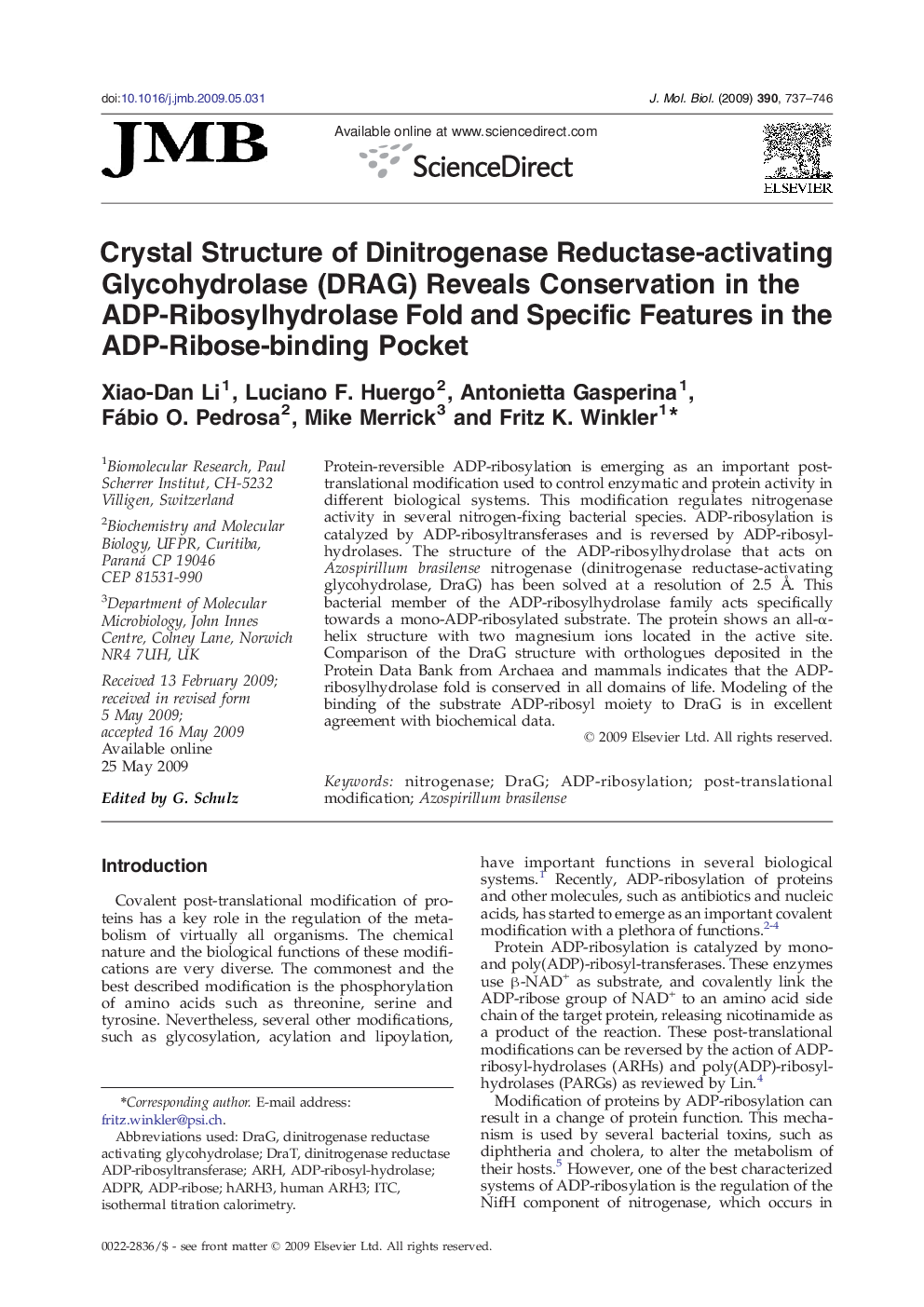| Article ID | Journal | Published Year | Pages | File Type |
|---|---|---|---|---|
| 2186496 | Journal of Molecular Biology | 2009 | 10 Pages |
Protein-reversible ADP-ribosylation is emerging as an important post-translational modification used to control enzymatic and protein activity in different biological systems. This modification regulates nitrogenase activity in several nitrogen-fixing bacterial species. ADP-ribosylation is catalyzed by ADP-ribosyltransferases and is reversed by ADP-ribosylhydrolases. The structure of the ADP-ribosylhydrolase that acts on Azospirillum brasilense nitrogenase (dinitrogenase reductase-activating glycohydrolase, DraG) has been solved at a resolution of 2.5 Å. This bacterial member of the ADP-ribosylhydrolase family acts specifically towards a mono-ADP-ribosylated substrate. The protein shows an all-α-helix structure with two magnesium ions located in the active site. Comparison of the DraG structure with orthologues deposited in the Protein Data Bank from Archaea and mammals indicates that the ADP-ribosylhydrolase fold is conserved in all domains of life. Modeling of the binding of the substrate ADP-ribosyl moiety to DraG is in excellent agreement with biochemical data.
